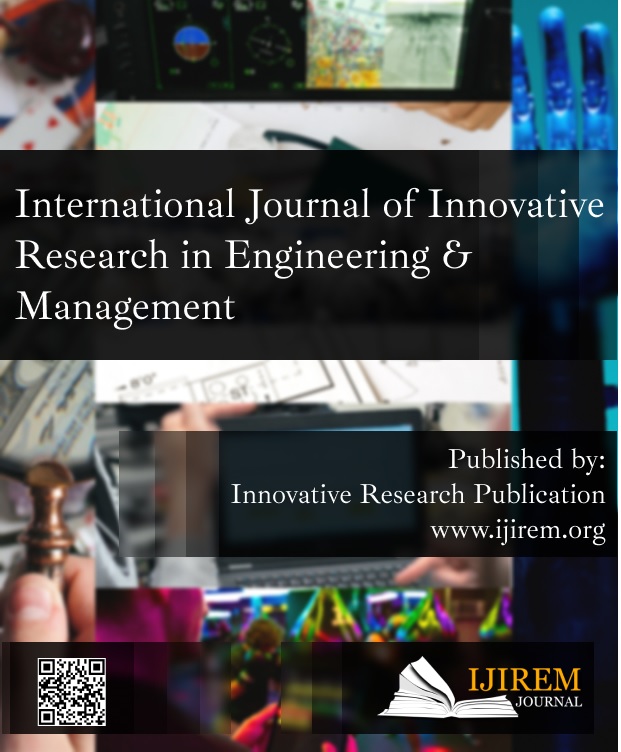A Pilot Study on the Impact of ICT and New Media on Society and Culture
Keywords:
ICT, New Media, Society, Culture, Positive role, Negative roleAbstract
Communication is vital for human existence. In all social structures and cultural practices, communication is very important. The development of culture and society is greatly influenced by how individuals interact, interpret information, and communicate with one another. The last few years have seen significant development in the field of Information and Communication Systems. These systems have changed the way people communicated a few years back. It is not only the communication pattern but these systems have immense capacity to create, capture, compute and distort information just in a matter of seconds. This has posed a big challenge to existing society and culture. As with every change in the way we consume and communicate information, there is a new struggle over meaning, significance, knowledge, and power. Old rules, orders, and beliefs cannot be applied perfectly under the new regime and thus formations of power, significance, and meaning of knowledge are all under threat from these changes. This work is an attempt to study these new means of information and communication systems in terms of their impact on our society and culture. The study is concentrated on understanding how ICT, New media, and Internet are playing their roles in our cultural formation and adaptation of society. The concluding part of this work is to see the role of these technologies in the current scenario and draw conclusions from them.
Downloads
References
Encyclopedia, "Culture and Communication ." Encyclopedia of Communication and Information. . Encyclopedia.com. (October 25, 2021). https://www.encyclopedia.com/media/encyclopedias
almanacs-transcripts-and-maps/culture-and-communication
Barger, Ken. 2008. “Ethnocentrism.” Indiana University, July 1. Retrieved May 2, 2011 (http://www.iupui.edu/~anthkb/ethnocen.htm).
Sasipat Champa, Kornphassorn Intarabumrung Importance of Learning Culture and Cultural Universal in Early Grade education, International (Humanities, Social Sciences, and Arts), Volume 11 Number 4 January-June 2018
Abderrahman Hassi and Giovanna Storti (August 22nd 2012). Globalization and Culture: The Three H Scenarios, Globalization - Approaches to Diversity, Hector Cuadra Montiel, IntechOpen, DOI: 10.5772/45655. Available from: https://www.intechopen.com/chapters/38348
William Little and Ron McGivern, Introduction to Sociology, 1st Canadian Edition, Licensed under a Creative
Commons Attribution 4.0 International License, except where otherwise noted.
Kumar, Ravi. 2014. “Social Media and Social Change: How Young People Are Tapping into Technology.” You think! N.p. Retrieved October 3, 2014 (http://blogs.worldbank.org/youthink/social-media-and
social-change-how-young-people-are-tapping-technology).
Pauls, Elizabeth Prine. "assimilation". Encyclopedia Britannica, 21 Aug. 2019, https://www.britannica.com/topic/assimilation-society. Accessed 18 December 2019.
Zaw, H. (2018) The Impact of Social Media on Cultural Adaptation Process: Study on Chinese Government Scholarship Students. Advances in Journalism and Communication, 6, 75-89. DOI: 10.4236/ajc.2018.63007.
McQuail, Dennis. Mass Communication Theory. 5th ed. New Delhi, India: Vistaar Publications, 2005
Shrestha, Deepanjal, and Seung Ryul Jeong. “An ICT Framework for Tourism Industry of Nepal: Prospect and Challenges.” Journal of Internet Computing and Services, vol. 17, no. 6, Korea Internet Information Society, Dec. 2016, pp. 113–122, doi:10.7472/JKSII.2016.17.6.113.
W. Tan, D. Shrestha, and S. R. Jeong, "Digital Tourism Development and Sustainability Model for Nepal," 2019 IEEE 23rd International Conference on Computer Supported Cooperative Work in Design (CSCWD), Porto, Portugal, 2019, pp. 182-187, DOI: 10.1109/CSCWD.2019.8791852.
Shrestha, Deepanjal, and Seung Ryul Jeong. “An Exploratory Study on the Usage of Internet Technologies and Tools in Educational Working Environment of Developing Countries: A Case of Pokhara University in Nepal.” Journal of Internet Computing and Services, vol. 16, no. 4, Korea Internet Information Society, Aug. 2015, pp. 101–110, doi:10.7472/JKSII.2015.16.4.101.
Mike Featherstone & Roger Burrows, Cyberspace/Cyberbodies/Cyberpunk: Cultures of
Technological Embodiment, SAGE Publications Ltd, June 19, 2012, DOI:http://dx.doi.org/10.4135/9781446250198
Boerner Gerald. "The Internet Today: Social Networking." Prof. Boerner's Explorations.10th January 2010. 16th March 2010. <http://www.boerner.net/jboerner/?m=20100110>.
Carolyn R. Miller, Dawn Shepherd. ―Blogging as Social Action: A Genre Analysis of the Weblog.‖ on 12th March 2010. <http://blog.lib.umn.edu/blogosphere/ blogging_as_social_action.html>.
Croteau, David, and Hoynes, William. Media Society: Industries, Images, and Audiences. 3rd ed. Thousand Oaks: Pine Forge Press, 2003.
Goldstein, Juliana Rotich. "Digitally Networked Technology in Kenya's 2007–2008 Post Election Crisis" September 2008. 22nd March 2010. <http://cyber.law.harvard.edu/sites/cyber.law.harvard.edu/fil
es/Goldstein&Rotich_Digitally_Networked_Technology_Ke nyas_Crisis.pdf>.
"Study: Ages of social network users." Pingdom.com.16th February 2010. 22nd March 2010 <http://royal.pingdom.com/2010/02/16/study-ages-of-social network-users>.
"Youtube affects society." WordPress.com. 24 September 2008. 8th March 2010.
http://camouflageculture.wordpress.com/2008/09/24/youtube -effects-society/.
